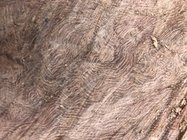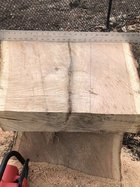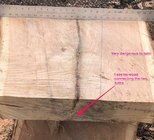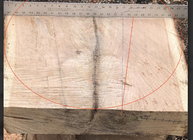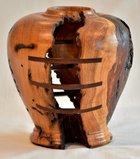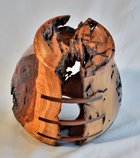I have this crotch slab. I’d love to make a large once turned platter. It would have the pith in 4 places and some very nice grain. Most of the bark inclusion would get turned away.
I’m concerned about the inclusion, I’d need to keep speed way down ~300 rpm? Im also concerned that the pith areas would split badly instead of just warping.
What would you do?
I’m concerned about the inclusion, I’d need to keep speed way down ~300 rpm? Im also concerned that the pith areas would split badly instead of just warping.
What would you do?

